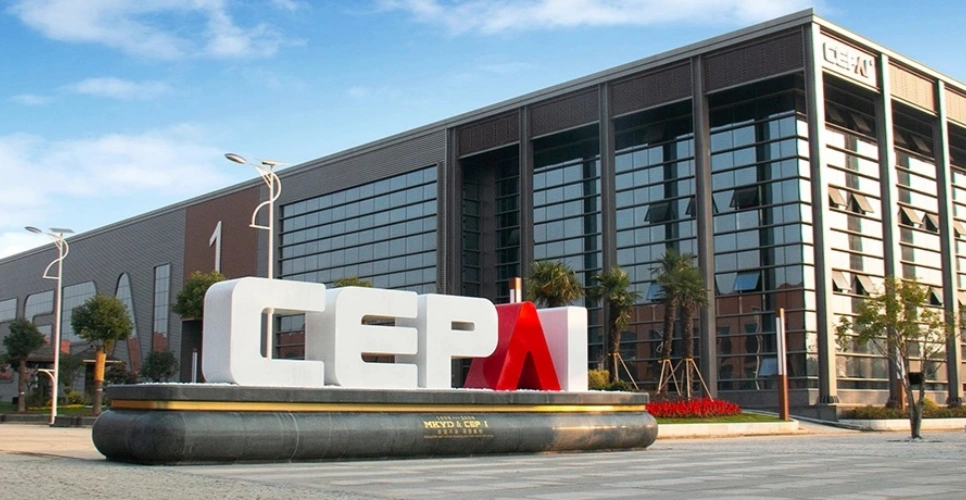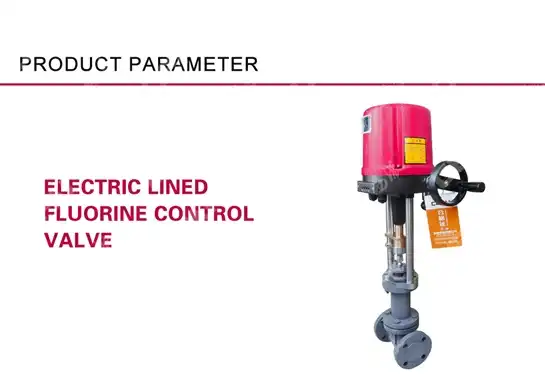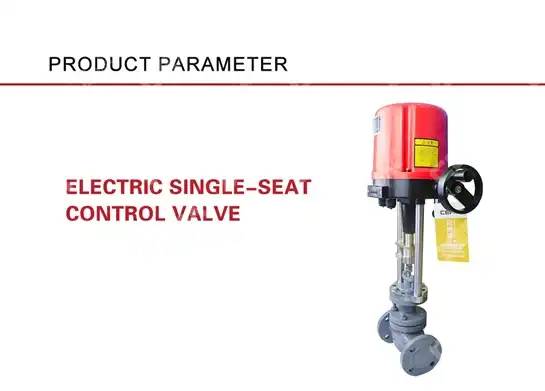From Heavy to Light: Why the Single Seat Control Valve is Evolving
Industrial operations worldwide face mounting pressure to optimize efficiency while reducing operational costs and maintenance burdens. Traditional heavy-duty Single Seat Control Valve systems have long dominated industrial applications, but their substantial weight, complex maintenance requirements, and energy-intensive operation create significant challenges for modern facilities. This evolution from heavy to lightweight Single Seat Control Valve technology represents a fundamental shift in valve engineering, driven by advancements in materials science, precision manufacturing, and intelligent control systems that promise enhanced performance with reduced operational complexity.
Understanding the Traditional Single Seat Control Valve Architecture
Single Seat Control Valve systems have historically been engineered with robust, heavyweight construction to withstand extreme industrial conditions. These conventional designs feature thick-walled valve bodies manufactured from heavy-duty materials like carbon steel and cast iron, designed to handle high-pressure applications in petrochemical, oil and gas, and power generation industries. The traditional Single Seat Control Valve architecture incorporates a single plug and seat arrangement that creates substantial upward force on the valve stem, requiring powerful actuators to counteract this pressure differential effectively. The heavyweight nature of conventional Single Seat Control Valve systems stems from their reliance on material thickness and mass to achieve structural integrity and pressure containment. These valves typically feature oversized actuators to manage the significant forces generated by process pressure acting on the bottom side of the plug. The substantial actuator requirements not only increase the overall weight but also contribute to higher energy consumption and more complex installation procedures.

-
Historical Design Limitations
Traditional heavyweight Single Seat Control Valve designs present several operational challenges that have driven the industry toward lighter alternatives. The substantial mass of these systems creates installation difficulties, requiring heavy-duty mounting structures and specialized lifting equipment for maintenance operations. The large actuators necessary to control these valves consume considerable energy and require robust electrical infrastructure, increasing both installation and operational costs significantly.
Advanced Materials Revolutionizing Single Seat Control Valve Design
Modern Single Seat Control Valve manufacturing has undergone revolutionary changes through the integration of advanced materials that maintain structural integrity while dramatically reducing weight. High-strength alloys, including specialized stainless steel grades like 316L and duplex materials, provide superior corrosion resistance and mechanical properties at significantly reduced thickness compared to traditional materials. These advanced materials enable Single Seat Control Valve designs that achieve equivalent or superior performance characteristics while reducing overall valve weight by up to forty percent. The implementation of advanced materials in Single Seat Control Valve construction extends beyond basic weight reduction to encompass improved thermal stability and enhanced resistance to aggressive media. Modern valve bodies utilize precision-cast materials that eliminate internal stress concentrations, resulting in more reliable operation and extended service life. The reduced material volume also enables more precise machining tolerances, contributing to improved sealing performance and reduced leakage rates in Single Seat Control Valve applications. CEPAI's innovative approach incorporates materials such as CF8, CF8M, and specialized high-performance alloys that provide exceptional durability while maintaining lightweight characteristics. The valve body construction utilizes precision casting techniques that optimize material distribution, concentrating strength where needed while eliminating unnecessary mass. Internal components feature advanced materials including 304 and 316 stainless steel variants with specialized surfacing treatments that enhance wear resistance without adding significant weight.
-
Precision Engineering and Weight Optimization
Modern Single Seat Control Valve designs employ sophisticated engineering analysis to optimize component geometry and material distribution. Computer-aided design and finite element analysis enable engineers to precisely calculate stress concentrations and optimize wall thickness throughout the valve body. This precision engineering approach ensures that Single Seat Control Valve systems maintain required pressure ratings while minimizing material usage and overall weight.
Intelligent Actuator Integration in Modern Single Seat Control Valve Systems
The evolution toward lighter Single Seat Control Valve systems has been significantly enhanced by advances in actuator technology that provide greater force efficiency with reduced size and weight. Modern electric actuators incorporate high-torque servo motors and precision gear reduction systems that generate substantial control forces while maintaining compact dimensions. These intelligent actuators feature advanced control algorithms that optimize power consumption and provide precise positioning capabilities for Single Seat Control Valve applications across diverse industrial environments. Contemporary actuator designs integrate sophisticated feedback systems that continuously monitor valve position and adjust control signals to maintain optimal performance. The implementation of 4-20mA control signals with advanced digital communication protocols enables precise control of Single Seat Control Valve systems while providing real-time diagnostic capabilities. These smart actuators can automatically compensate for process variations and provide predictive maintenance alerts, reducing operational costs and improving system reliability. CEPAI's electric actuator systems operate at standard voltages of 220V and 380V with frequency compatibility of 50Hz or 60Hz, providing global applicability. The actuators incorporate ambient temperature operation ranging from -30°C to +70°C, ensuring reliable performance across diverse industrial environments. Advanced control signal processing enables precise 4-20mADC operation with optional signal feedback capabilities that enhance system integration and monitoring capabilities for Single Seat Control Valve applications.
-
Smart Control and Monitoring Capabilities
Modern Single Seat Control Valve systems integrate intelligent monitoring and control features that enhance operational efficiency while reducing maintenance requirements. Advanced position transmitters provide continuous feedback on valve position and operational status, enabling predictive maintenance strategies that minimize unplanned downtime. These smart monitoring systems can detect developing issues before they impact process performance, allowing maintenance teams to schedule interventions during planned outages rather than responding to emergency failures.
Performance Advantages of Lightweight Single Seat Control Valve Technology
The transition to lightweight Single Seat Control Valve systems delivers substantial performance improvements across multiple operational parameters. Reduced valve weight enables faster response times due to decreased inertial forces, resulting in more precise control characteristics and improved process stability. The lighter construction also reduces stress on piping systems and support structures, enabling more flexible installation options and reduced infrastructure requirements for Single Seat Control Valve applications. Lightweight Single Seat Control Valve designs demonstrate superior energy efficiency through reduced actuator power requirements and optimized flow characteristics. The precision manufacturing techniques employed in modern valve construction enable tighter machining tolerances that improve sealing performance and reduce fugitive emissions. These performance improvements translate directly into reduced operational costs through decreased energy consumption, lower maintenance requirements, and improved process efficiency. The enhanced precision available in lightweight Single Seat Control Valve designs enables superior flow control characteristics with improved rangeability and more accurate positioning. Modern valve trim designs optimize flow patterns to minimize turbulence and reduce pressure losses, contributing to overall system efficiency improvements. The combination of lightweight construction and precision engineering results in Single Seat Control Valve systems that deliver enhanced performance while simplifying installation and maintenance procedures.
-
Installation and Maintenance Benefits
Lightweight Single Seat Control Valve systems provide significant advantages in installation complexity and maintenance accessibility. The reduced weight enables installation with standard lifting equipment and reduces structural support requirements, lowering installation costs and timeline. Maintenance operations benefit from improved accessibility and reduced component weight, enabling faster turnaround times and reduced maintenance costs for Single Seat Control Valve systems.

Industry Applications and Operational Benefits
Modern lightweight Single Seat Control Valve technology finds extensive application across diverse industrial sectors, including petrochemical processing, power generation, water treatment, and manufacturing operations. These applications benefit from the improved control precision and reduced operational complexity offered by advanced Single Seat Control Valve designs. The versatility of contemporary valve technology enables customization for specific application requirements while maintaining the fundamental advantages of lightweight construction and intelligent operation. CEPAI's Single Seat Control Valve systems demonstrate exceptional performance across temperature ranges from -60°C to -20°C for low-temperature applications, with opening ranges configurable from 0-90 degrees or 0-180 degrees based on specific operational requirements. The valves accommodate diverse flow media including gas, water, and oil applications with customizable specifications that address unique process conditions. The comprehensive product range includes complementary technologies such as pneumatic control valves, ball valves, butterfly valves, and fluorine-lined valves that provide complete process control solutions. Industrial facilities implementing lightweight Single Seat Control Valve technology report significant improvements in operational efficiency, maintenance cost reduction, and process control precision. The enhanced reliability and reduced maintenance requirements enable extended operational periods between maintenance interventions, improving overall plant availability and productivity. These operational benefits contribute directly to improved profitability and competitive advantage in demanding industrial markets.
-
Energy Efficiency and Environmental Impact
Lightweight Single Seat Control Valve systems contribute to improved environmental performance through reduced energy consumption and enhanced operational efficiency. The optimized actuator requirements reduce electrical power consumption, contributing to lower carbon footprint and operational costs. Improved sealing performance reduces fugitive emissions, supporting environmental compliance and sustainability objectives while maintaining superior process control capabilities.
Future Innovations and Technological Advancement
The continued evolution of Single Seat Control Valve technology promises further innovations in materials science, intelligent control systems, and manufacturing techniques that will enhance performance while reducing weight and complexity. Emerging technologies including additive manufacturing, advanced composite materials, and artificial intelligence integration will drive continued improvements in Single Seat Control Valve design and operation. These technological advances will enable even greater customization capabilities and enhanced performance characteristics tailored to specific industrial applications. Research and development efforts focus on integrating Internet of Things connectivity and advanced analytics capabilities that will enable predictive maintenance and autonomous optimization of Single Seat Control Valve systems. These innovations will further reduce operational complexity while enhancing reliability and performance across diverse industrial applications. The integration of machine learning algorithms will enable valves to continuously optimize their performance based on operational data and process conditions. CEPAI's commitment to technological innovation includes substantial investment in intelligent manufacturing capabilities, including the development of the longest high-precision intelligent manufacturing flexible production line in the Asia Pacific region. This advanced manufacturing capability enables precision production of lightweight Single Seat Control Valve systems with enhanced quality control and customization capabilities. The integration of remote operation and maintenance service systems provides comprehensive support for modern valve technology implementations.
Conclusion
The evolution from heavy to light Single Seat Control Valve technology represents a fundamental advancement in industrial valve engineering that delivers substantial operational benefits through improved performance, reduced complexity, and enhanced reliability. This technological progression addresses critical industry needs for increased efficiency while reducing maintenance burdens and operational costs.
Cooperate with CEPAI Group Co., LTD.
As a leading China Single Seat Control Valve manufacturer, CEPAI Group Co., LTD. combines advanced engineering expertise with intelligent manufacturing capabilities to deliver superior valve solutions for global industrial applications. Our comprehensive range of High Quality Single Seat Control Valve products offers competitive Single Seat Control Valve price options with extensive customization capabilities. As your trusted China Single Seat Control Valve supplier and factory, we provide complete pre-sales consultation, installation support, and comprehensive after-sales service backed by ISO quality certifications and CNAS laboratory testing. Discover our complete Single Seat Control Valve for sale range and experience the CEPAI advantage. Contact us at cepai@cepai.com for your valve requirements.
References
1. "Control Valve Handbook: Fourth Edition" - Emerson Process Management, Technical Engineering Staff
2. "Process Control Instrumentation Technology" - Johnson, Curtis D.
3. "Valve Selection and Specification Guide" - American Society of Mechanical Engineers (ASME)
4. "Industrial Flow Control: Principles and Practice" - Smith, Peter R. and Jones, Michael A.
_1745994738000.webp)
Get professional pre-sales technical consultation and valve selection services, customized solution services.

About CEPAI


